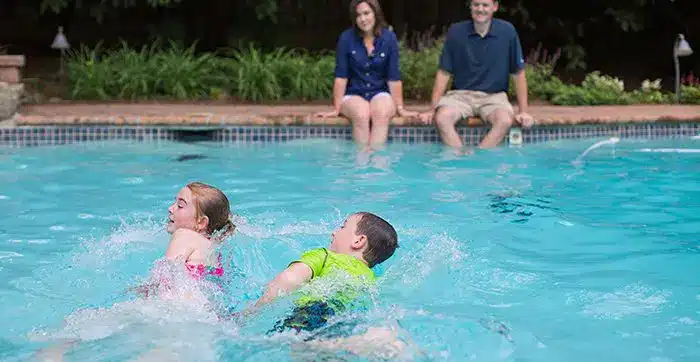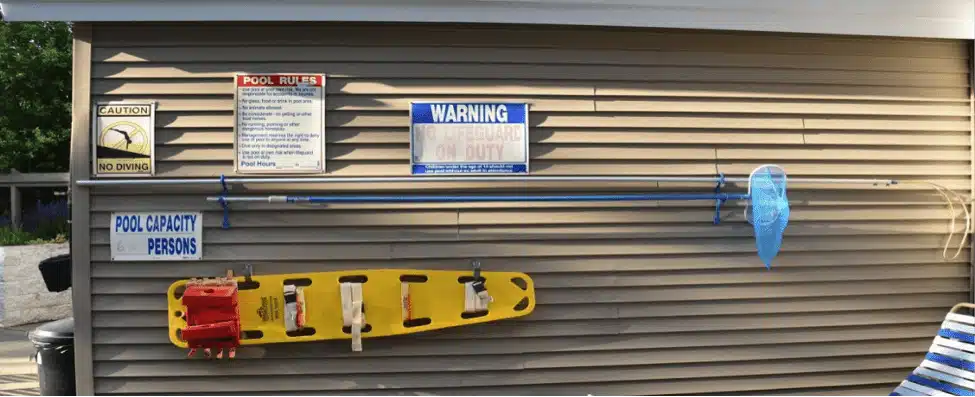Search Post
Categories
7 Legal Requirements of Public Swimming Pool Owners
Worse, it can take less than two minutes for a person to drown.

Every year more than 3,500 people die from drowning. It is the fifth most common cause of accidental death.
Worse, it can take less than two minutes for a person to drown. Your child can drown in less time than it takes to go to the restroom, or making a phone call, or while reading an article on the phone or a Facebook post.
While Michigan’s lakes are no stranger to accidents for beachgoers and watersport enthusiasts, public swimming pools are an all-too-common (and possibly overlooked) setting for tragedy, too.
Public swimming pools include those which are for parks, schools, motels, camps, resorts, apartments, clubs, hotels, mobile home parks, subdivisions, and waterparks.
A public swimming pool does not include a pool or portable pool located on the same premises with a family dwelling and for the benefit of the occupants and their guests, a natural bathing area such as a stream, lake, river, or man-made lake or pond that uses water from natural sources.
Your safety, as well as the safety of your family and friends, is paramount. Here are some safety tips that you and your family should keep in mind before and after entering a public swimming pool.
Responsibilities of a Public Swimming Pool Owner
- A swimming pool owner must ensure that the water is not more than 5.25 feet in a swimming pool that is no larger than 800 square feet, which has a shallow area for walking or standing. The depth of the pool is to be plainly marked on the walkway next to the swimming pool. Depth markers are also to be placed at each side and at each end of the pool at the maximum and the minimum depths, at a change in the floor slope between shallow and deeper areas and at other critical points.
- A swimming pool owner shall place the words “no diving” between the depth markers on the walkway where the water depth is less than 5 feet at a swimming pool.
- A swimming pool owner shall provide a lifeline at a swimming pool at a change in floor slope where the water depth is less than 5 feet or at the 5-foot depth if the slope does not change.
- A swimming pool owner shall equip a swimming pool with ladders, stairways, or similar means of egress at each end of a pool, other than a wading pool, water slide pool, or a spa pool, that is less than 30 feet wide.
- Many public swimming pools, especially at motels, camps, resorts, apartments, clubs, hotels, and mobile home parks, do not have a lifeguard on duty. A swimming pool owner or operator shall provide lifeguard service at a swimming pool, other than a wading pool or a spa pool, if the pool is owned or operated by a government, a governmental subdivision or agency, a public corporation, or a school, if the total water surface area within the swimming pool enclosure is more than 2,400 square feet or if a diving board is provided.
Public Swimming Pools: Public Health Code Act 368 of 1978 R 325.2198 Lifeguards
6. When a lifeguard is not present, a swimming pool owner is required to have a number of safety equipment present and functioning at all times including a spine board, first aid kit, a rescue pole with a shepherd’s crook, and a throwing rope with an 18-inch diameter ring. A swimming pool owner also has to have a telephone available for emergencies.
7. Before you swim, everyone in your party should locate these possible life-saving devices.

Even the best of swimmers can drown in shallow water and it does not take long for something to go horribly wrong. Always have the right equipment on hand, along with someone paying attention in case swimmers are in distress.
